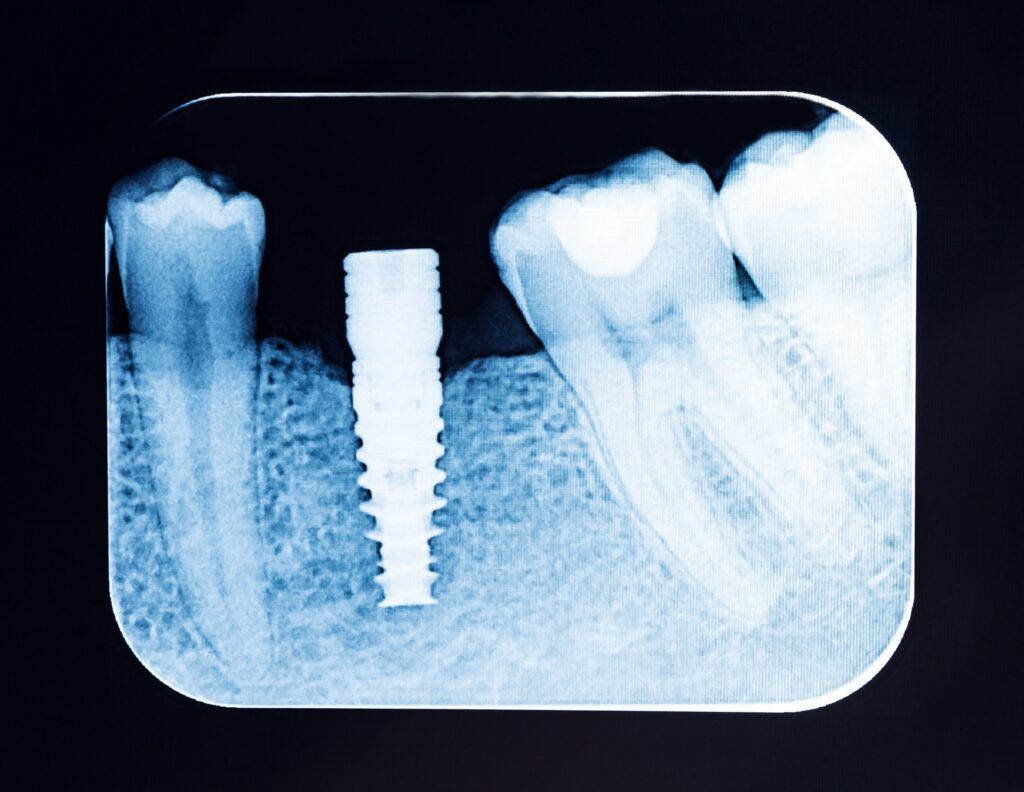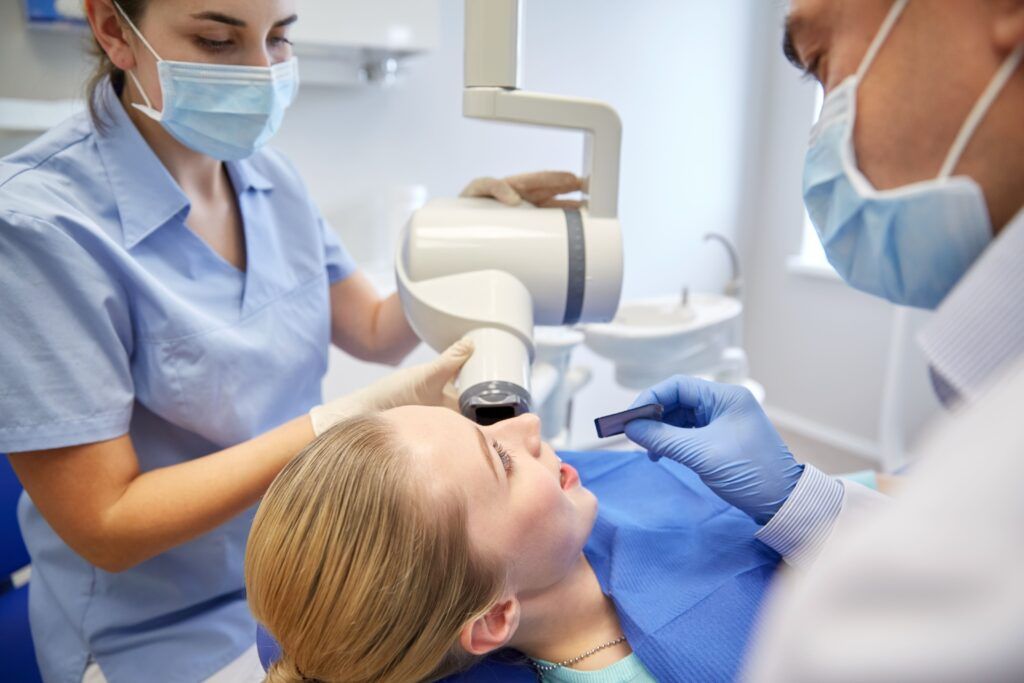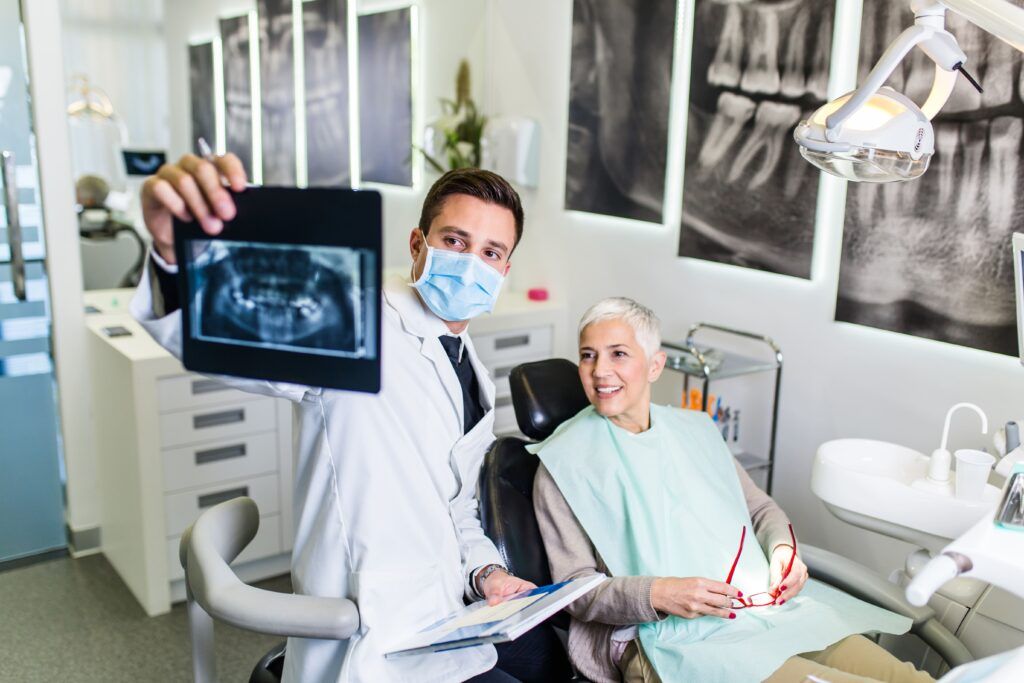Dental imaging plays a pivotal role in the planning and execution of dental treatments, especially in the realm of implant dentistry. Among various diagnostic tools, bitewings—a specific type of dental X-ray—offer invaluable insights that go beyond mere tooth decay detection. In implant dentistry, bitewings are crucial for assessing jawbone quality, locating vital anatomical structures, and ensuring the integrity of adjacent teeth. This blog post delves into the technical aspects of bitewings and explores their vital application in ensuring the precise placement and success of dental implants. We will uncover how these specialized X-rays contribute to meticulous treatment planning and follow through with case studies that highlight their practical benefits in real-world scenarios.
In this Blog:
- Understanding Bitewings
- The Role of Bitewings in Implant Dentistry
- Bitewings and Treatment Planning
- What to Expect
Understanding Bitewings
Bitewings are a specialized form of dental X-ray that primarily focus on capturing the crowns of the upper and lower teeth in a single view. They are called “bitewings” because the patient bites on a wing-shaped device that holds the X-ray film or digital sensor in place. This positioning allows the dentist to see how the teeth line up and to check for interdental cavities and the level of bone loss due to gum disease. Unlike full-mouth or panoramic X-rays, bitewings provide a more localized view, making them ideal for detecting changes in dental structures and conditions affecting specific areas.
The Technology Behind Bitewing X-rays
Bitewings can be captured using traditional film or through digital means. Digital bitewings offer several advantages over traditional film, including lower radiation exposure, instant image processing, and enhanced imaging software capabilities that allow dentists to view and analyze the teeth and bone with greater precision. The digital images can be zoomed in and adjusted for contrast and brightness, providing a clearer view of minute details that are crucial for accurate diagnosis and treatment planning.
Advantages of Using Bitewings in Dental Diagnostics
Bitewings are invaluable in dental diagnostics due to their ability to provide detailed images of the teeth and the surrounding bone structure. They help dentists identify problems such as tooth decay, secondary caries under existing restorations, and the extent of gum disease. Additionally, bitewings are essential in monitoring the progression of dental conditions over time, enabling dentists to adjust treatment plans as needed to better address the patient’s dental health. For implant dentistry, this localized, detailed view is critical in assessing the suitability of bone for implant placement and in planning the procedure to avoid complications.
The use of bitewings in implant dentistry not only aids in the initial assessment but also serves as a follow-up tool to ensure the ongoing health of the implant and the surrounding tissue. By understanding the specifics of bitewing technology and its benefits, dental professionals can enhance their diagnostic capabilities, leading to more effective treatments and better patient outcomes.
The Role of Bitewings in Implant Dentistry
Bitewings play a crucial role in the specialized field of implant dentistry by providing detailed insights that are vital for successful implant placement. Here’s how they contribute to various aspects of the implant process:
Assessing Bone Health
One of the primary uses of bitewings in implant dentistry is the evaluation of bone density and quality, which are critical factors in determining the eligibility for an implant. Bitewings help in assessing the amount of bone available and its suitability to support an implant. This is essential because adequate bone density ensures that the implant will anchor securely, providing a stable foundation for the artificial tooth.
Identifying Anatomical Landmarks and Potential Impediments

Implant procedures require precise placement to avoid damaging vital structures such as nerves and sinus cavities. Bitewings aid in clearly identifying these anatomical landmarks, helping surgeons plan the implant placement with accuracy. This precise mapping ensures that the implant does not interfere with existing biological structures, thereby minimizing the risk of complications during and after the surgery.
Monitoring the Integrity of Adjacent Teeth
Bitewings are invaluable for assessing the health of teeth adjacent to the proposed implant site. It is crucial to ensure that these neighboring teeth are free of decay and other structural problems before proceeding with an implant. This assessment helps in preventing potential damage to adjacent teeth during the implant procedure and ensures the overall integrity of the dental arch is maintained.
The strategic use of bitewings in implant dentistry not only assists in the meticulous planning of the placement and size of implants but also ensures the long-term success of the treatment by carefully evaluating and monitoring the condition of the oral structures involved. Through these diagnostic images, dentists can achieve a higher precision in implant placement, leading to better functional and aesthetic outcomes for the patient.
Bitewings and Treatment Planning
Bitewings are instrumental in the detailed planning phase of dental implant procedures, contributing significantly to the accuracy and success of the implant placements. Here’s how bitewings integrate into the treatment planning process for dental implants:
Contribution to Precise Implant Positioning
The precise placement of dental implants is crucial to their success and functionality. Bitewings provide clear images of the bone structure and the spatial relationship between teeth, allowing dentists to determine the optimal position for the implant. This precision helps in avoiding vital structures such as nerves and maximizing the aesthetic and functional outcomes by ensuring the implant is placed in the most suitable location.
Planning the Size and Type of Implants
Bitewings help in determining the appropriate size and type of the implant needed based on the available bone density and volume. The dimensions of the implant are critical to its integration with the bone and the overall stability of the dental prosthesis. By assessing the detailed images provided by bitewings, dentists can choose implants that fit perfectly within the patient’s dental anatomy, enhancing the likelihood of a successful osseointegration.
Integration with Other Imaging Modalities
While bitewings are highly valuable, they are often used in conjunction with other imaging techniques such as panoramic X-rays and computed tomography (CT) scans. This integration of multiple imaging modalities allows for a comprehensive view of the patient’s oral and maxillofacial anatomy, providing a multi-dimensional perspective that is essential for complex implant procedures. The combination of these images ensures that every aspect of the implant surgery, from bone quality assessment to the precise placement and angle of the implants, is meticulously planned.
The detailed insight provided by bitewings significantly enhances the treatment planning process, making dental implant procedures more predictable and successful. By integrating bitewings into the diagnostic and planning phases, dental professionals can ensure that the chosen treatment strategy is both safe and effective, leading to better health outcomes and patient satisfaction.
What to Expect
When patients are scheduled to receive bitewing X-rays, they can expect a straightforward and quick diagnostic procedure. Here’s what typically happens during the process:
- Preparation: The dental technician or dentist will usually explain the process to the patient. Patients are often provided with a lead apron to wear, which helps protect the body from unnecessary radiation exposure.

- Positioning: The patient will be asked to sit upright in the dental chair. A small, flat piece of plastic containing X-ray film or a digital sensor is placed in the patient’s mouth. The patient will need to bite down on this piece, holding it firmly between their teeth. This “wing” helps position the film or sensor properly to capture the desired images.
- Taking the X-ray: The X-ray machine is positioned adjacent to the patient’s head to align with the film holder. The dentist or technician will then step out or behind a protective barrier and activate the machine. There is no discomfort associated with the X-ray itself; the patient will just hear a brief buzzing or clicking sound as the image is taken.
- Repositioning: Multiple bitewings are often needed to capture different areas of the mouth. The film holder may be moved around to different positions between the teeth to get all the necessary views, typically involving both sides of the mouth for the upper and lower teeth.
- Reviewing the Results: The entire process usually takes only a few minutes. If digital X-rays are used, the images are available immediately for review by the dentist. For film X-rays, there might be a short wait while the film is developed.
- Discussion: After reviewing the bitewing X-rays, the dentist will discuss any findings with the patient. This might include pointing out areas of decay, discussing gum health, or planning further dental work such as fillings or crowns.
Bitewing X-rays are a common and essential tool in dental diagnostics, helping to identify problems that aren’t visible to the naked eye. They are typically done during regular dental check-ups to monitor dental health and can also be crucial in planning specific treatments like dental implants or addressing decay.
Conclusion
In conclusion, bitewing X-rays serve as an essential diagnostic tool in dentistry, offering valuable insights that go beyond simple cavity detection. Their ability to accurately depict the condition of the crowns of the teeth and the level of bone between the teeth makes them indispensable in both routine dental examinations and specialized procedures like implant dentistry. By allowing dentists to assess bone density, locate anatomical landmarks, and monitor the health of adjacent teeth, bitewings contribute significantly to precise treatment planning and successful dental outcomes. As technology advances, the integration of bitewings with other imaging modalities continues to enhance the safety, efficacy, and comfort of dental care, ensuring that patients receive the most effective treatments tailored to their individual needs.

